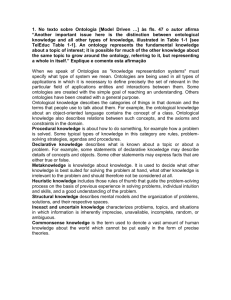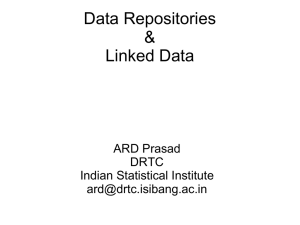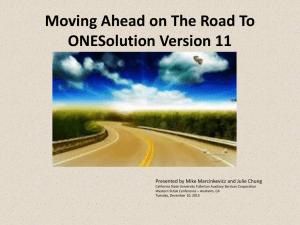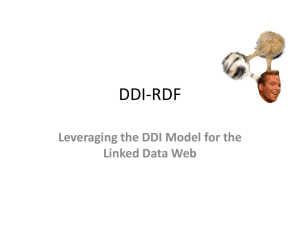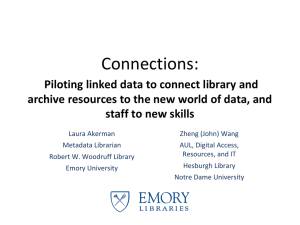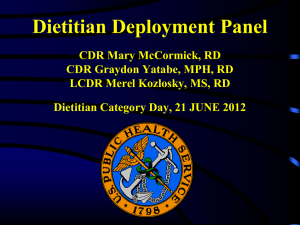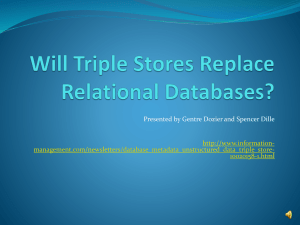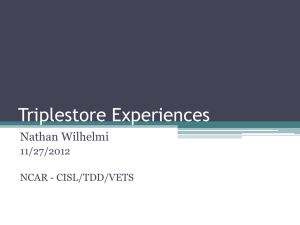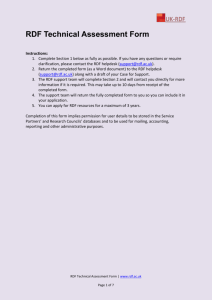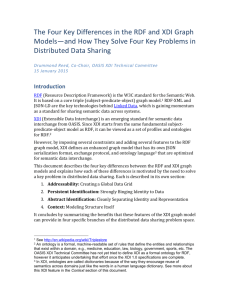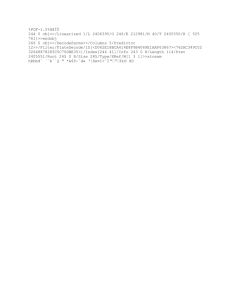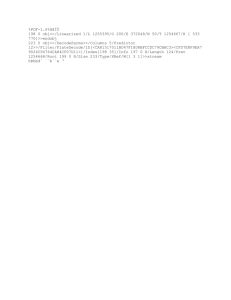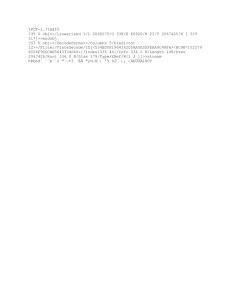Graph Model for RDF
advertisement
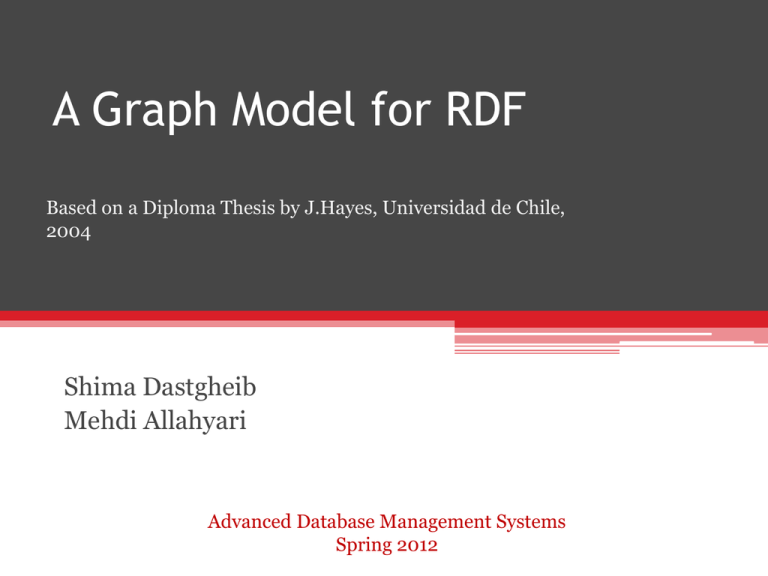
A Graph Model for RDF
Based on a Diploma Thesis by J.Hayes, Universidad de Chile,
2004
Shima Dastgheib
Mehdi Allahyari
Advanced Database Management Systems
Spring 2012
Introduction
• A graph is a generalization of the simple concept
of a collection of nodes, connected pair-wise by
edges.
• very common to represent structures of any sort
as graphs, because many practical questions can
be reduced to graph problems.
• first contributions to graph theory is Leonhard
Euler’s discussion of the Seven Bridges of
K¨onigsberg.
Web and RDF
Web was built principally for human
consumption, but due to its enormous size:
• to make use of software agents for organizing,
searching, and processing its content.
• Although the data displayed on the Web is
machine-readable, it is not machine
understandable, fundamental requirement for
meaningful processing of it.
RDF
• A commonly accepted solution:
▫ enrichment of human-targeted Web resources
(Web pages, etc.) with machine-intelligible
information, also referred to as metadata
annotation.
• The RDF provides a simple triple syntax to
express such annotations:
• a resource (the subject) is described by a
property (the predicate) and its property value
(the object).
RDF
• directed labeled graphs can be employed to
represent RDF.
RDF Graph Model (pros and cons)
• various purposes for this:
▫ data can be conveniently visualized
▫ Results for problems stated for graphs in general
apply equally to RDF graphs.
Whether an RDF graph contains a certain type of
pattern.
▫ Programming libraries providing graph data
structures and algorithms are available to
facilitate the implementation of applications using
RDF.
RDF Graph Model (pros and cons)
• graph representation has certain limitations:
▫ RDF permits properties to be described just like
other resources.
▫ Example: <isCoauthor subProperty collaborates>
RDF Graph Model (pros and cons)
• somewhat strange: one of the edges connects an
edge label with a node.
• The definition of graphs, however, implies that
nodes and edges are distinct sets.
• Another way:
RDF Graph Model (pros and cons)
• avoids the non-standard edges of the previous
example. Edges connect only nodes, but the
labels of edges and nodes intersect.
• The disadvantage :
▫ obtained graph does not truly represent the
connectivity of the RDF data.
property isCoauthor is related to collaborates
• Solution: Bipartite graph for representing RDF
RDF Concept
• Formal Definition:
▫ “uris” be the set of URIs, “blanks” the set of blank
node identifiers, and “lits” the set of possible
literal values of whatever datatype.
RDF Graph
• RDF Graph T is a set of RDF statements:
▫ univ(T): set of all values occurring in all triples of T.
▫ vocab(T): set of all values of the universe that are not
blank nodes
• V be a set of URIs and literal values:
• set of all RDF Graphs with a vocabulary included in V
To recap: RDF Data
• RDF statements are triples consisting of subject
, predicate and object .
• URI references may occur as any part of a triple.
• Any collection of RDF data is an RDF Graph.
• convincing for intuitive understanding
• not compatible with the definition of a graph in a
mathematical sense
Definition of Graph:
• A graph is a pair G = (N,E), where N is a set
whose elements are called nodes, and E is a set
of unordered pairs {u, v}, u, v ∈ N
Formal Definition of the
Representation of an RDF Graph
Shortcomings of Directed Labeled
Graphs
• in a given set of RDF data a URI reference may
occur at the same time as the predicate of one
statement and as the subject or object of others
• every reification of a statement lets the
statement’s property appear as the
object(subject) of another statement.
Solution 1)
Issues
• Puzzling drawings
• Sets of arcs and nodes which intersect
▫ does not correspond to the commonly accepted
definition of graphs.
▫ Reduces the task from graph representation to
visualization for humans and gives
Solution 2)
The information resource p occurs multiple times
in the graph:
• once for each usage as a predicate (as edge label)
• once for all uses as a subject or object (as node).
Issues
• Duplicating properties in the graph
representation of an RDF Graph makes it
unsuitable for the study of connectivity.
• Information about a property (its sub- and
super-properties, its domain and range) are
disconnected from the actual usage of the
property. This might result in users drawing
misleading conclusions;
From Binary to Ternary
• RDF triples establish ternary relations which
cannot be truly represented by the binary edges
of classic graphs.
• Labeling the edges neglects the fact that
properties are information resources in their
own right.
• proposed approach
▫ Beyond the scope of this presentation
Reference
• J. Hayes, A Graph Model for RDF, Diploma
Thesis, Technische Universitt Darmstadt/
Universidad de Chile, 2004.


